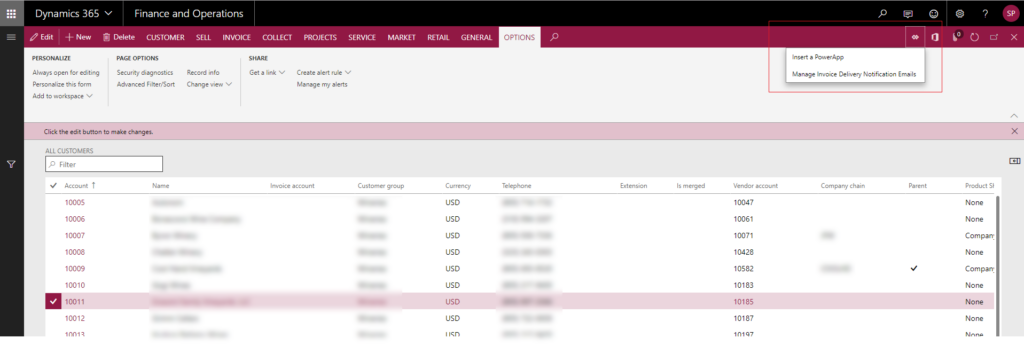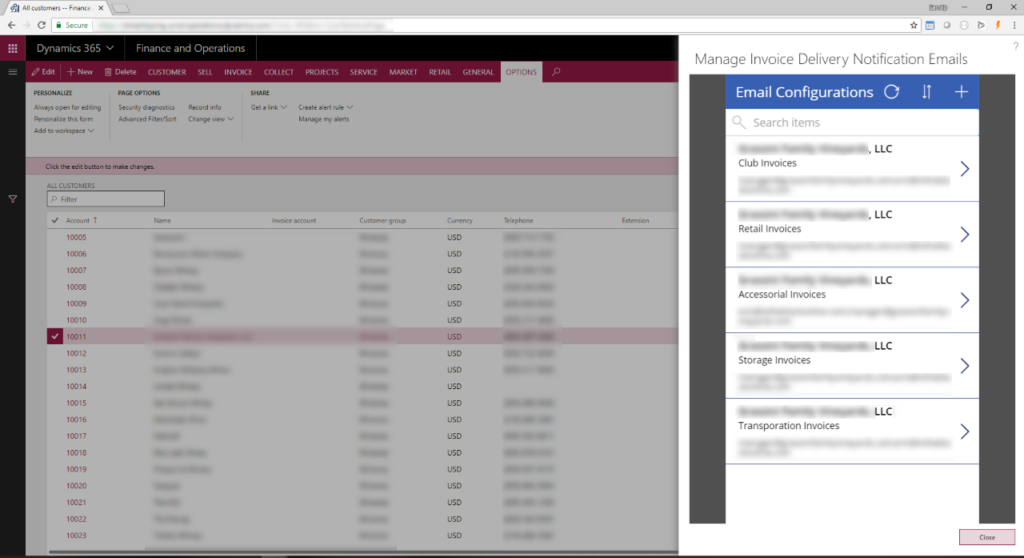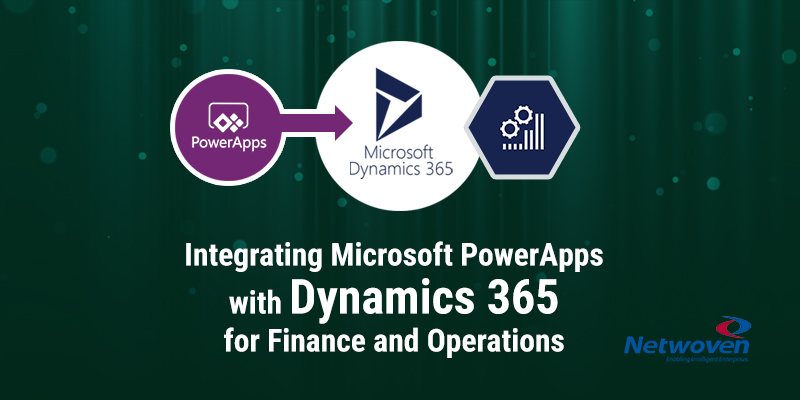While working on the recent project, we came across the requirement of maintaining customer invoice (different types – Retail, Transportation, Storage etc.) distribution email list outside of AX in an Azure Database. In the DB table, we can find AX Customer Account number along with various other email configuration data. This configuration data is being used by a scheduled web job to deliver invoices to the customer. This email distribution list changes frequently per customer and we were tasked to develop a CRUD interface to manage this configuration data. To manage this situation, we selected PowerApps to design the Admin tool and integrating it well with Dynamics 365 for Finance and Operations.
After the D365 spring release’18 virtual launch events sessions, we were greatly impressed by PowerApps and Dynamics 365 for Finance and Operations integration. As this feature enables users to create their own apps and seamlessly integrate them with Dynamics 365 for Finance and Operations. So, for our immediate project scenario, we decided to look deeper and apply it.
How it Works
On Dynamics 365 for Finance and Operations Customers Grid, you need to select a customer and click on the PowerApps button on the standard action pane. Then select “Manage Invoice Delivery Notification Emails” app. This will open a side panel that contains the embedded PowerApps. It will only display the invoice emails for the selected customer and will let the user view, add, edit and delete to manage the data.

Detailed Scenario
- When we embed the PowerApp, we select a single field (Account Number) to send as input to the Power App. This allows the App to be responsive (display related emails only for the selected customer) based on the data that the user is currently viewing in Finance and Operations.
- Inside the PowerApps the input data that is passed from Dynamics 365 for Finance and Operations can be accessed using the Param (“EntityId”) variable. Then we need to use the value from the variable for the desired operation.
- Dynamics 365 for Finance and Operations supports integration with Power Apps in Platform update 14.
It’s a great way to supplement AX functionality with data from another system.

Wrapping Up
Hope this real-life scenario would be helpful for anyone who is looking for Dynamics 365 for Finance and Operations implementations. The main advantage that we can find while using PowerApps in Dynamics 365 for Finance and Operations is that you do not need to depend on developers to build extensions in Dynamics 365 for Finance and Operations. If you are a Power user, you can easily create your own PowerApps applications and integrate it with Dynamics 365 for Finance and Operations in few clicks.
























Great blog! excellent Information on dynamics 365 for finance and Operations. Please keep sharing.
Great information and well explained working of MSD for finance and operations